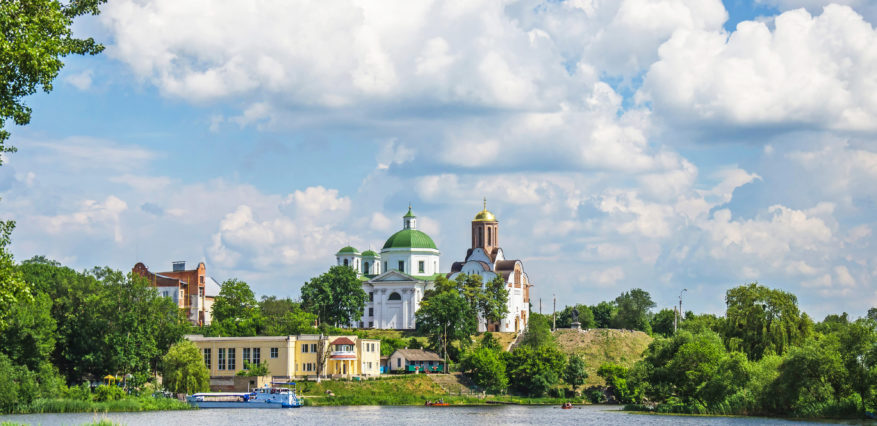 Bila Tserkva is a city located in Kyivska Oblast. It is located 84 km to the south from the capital of Ukraine. Bila Tserkva is home to 200,000 people and is an important administrative and cultural centre. Bila Tserkva is famous for its park called “Olexandria” as well as churches that, according to the legend, gave the name to the city which can be translated as “White Church”.
Bila Tserkva is a city located in Kyivska Oblast. It is located 84 km to the south from the capital of Ukraine. Bila Tserkva is home to 200,000 people and is an important administrative and cultural centre. Bila Tserkva is famous for its park called “Olexandria” as well as churches that, according to the legend, gave the name to the city which can be translated as “White Church”.
The approximate share of DH services in the city is 60%. There are about 700 buildings connected to the district heating system. Among them, 450 buildings are also supplied with centralised domestic hot water. There are two district heating suppliers in the city: Municipal Enterprise “Bilotserkivteplomerezha” (70% of the district heating services), and PJSC “Bilotserkivska CHP”. Municipal Enterprise “Bilotserkivteplomerezha” currently operates 29 boiler houses with an installed capacity of 46 Gcal/h. All boiler houses use natural gas for production of heat.
Bila Tserkva Demonstration Project – overview
The project proposed for Bila Tserkva was aimed at reducing of use of natural gas and increase of system efficiency in an economical way. The project implied interconnection of the two district heating systems in the Western part of Bila Tserkva and modernisation of one of the local production plants with the installation of a biofuel boiler. All buildings of the network area would be connected to the district heating via individual heating substations (read about how individual heat substations help with energy saving for the houses) and the existing pipe distribution network would be converted. The investment would reduce the use of fossil fuels in the system and enable the possibility to operate the DH system as a fully demand-driven and modern system.
The project in Bila Tserkva was interesting from a demonstration point of view. The primary reason for this is that the investment would cover a substantial modernisation of the system, from the boiler to pipelines and IHS. Introduction of biofuel as the base load in combination with decreased thermal losses and higher efficiency would reduce the use of natural gas and emissions of CO2. Furthermore, another district heating network is located in a close proximity to the project area and could be interconnected in the future.
Bila Tserkva Demonstration Project – details
The project area is situated in the western part of Bila Tserkva city and includes heating networks supplied from two boiler houses. These networks supply 11 residential buildings, 4 dormitories, buildings of the Medical College, bicycle sport school “Promin”, Department of Family and Youth Affairs of the City Executive Committee and others. Modernisation of the two networks was expected to affect a total of 2,600 people who were anticipated to benefit from improved heating services.
Specifics of the Bila Tserkva Project included:
- Installation of a biomass boiler (1×1.0 MW), gas boilers (2×1.5 MW) and boiler house upgrade
- Network replacement – approx. 380m district heating pipes, transformation of the pipe system and integration of the two networks into a single network. A major part of the underground network was planned to be replaced by the new pre-insulated pipes, while the part of the network in basements of the residential buildings was intended to be kept.
- Individual Heat Substations – Introduction of 17 IHSs. All buildings were intended to be connected to the network via individual heating substations.
- Close down of one boiler house.
The proposed investment was EUR 593,000 with a simple pay-back time of 7.5 years. The proposed financing plan was as follows:
- Total loan – EUR 251,500 (42.5%)
- Total grant – EUR 251,500 (42.5%)
- Total Bila Tserkva local contribution – EUR 90,000 (15%)
Once implemented, the project was expected to benefit the local community by:
- Saving 2,000 MWh heat per year
- Saving 800,000 m3 gas per year
- Saving 640 m3 water per year
- Saving 1,530 tonnes CO2 per year
Current status
The project was previously in the stage of receiving all the necessary approvals in preparation for implementation but was rejected by the city
Photo credit: city administration
